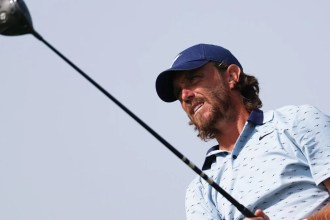In recent discussions surrounding the 2026 budget for Yellowknife, key organizations and residents have presented compelling asks, focusing on three main themes: art initiatives, action sports facilities, and improved active transportation infrastructure. These proposals underscore the growing demand for community engagement, cultural enrichment, and enhanced public safety.
### Art Initiatives: The NWT Art Centre Initiative
Mary Buckland, representing the NWT Art Centre Initiative, highlighted a significant gap in artist residency opportunities within the Northwest Territories (NWT). Out of 185 artist residencies located north of the 60th parallel, only one is currently based in the NWT. The initiative is advocating for a modest allocation of $25,000 in the upcoming 2026 budget to fund an artist-in-residence program in Yellowknife.
Buckland argued that such programming is critical for fostering creativity and cultural dialogue within the community. “Residencies are known to bring artistic, economic, cultural, capacity-based, and reputation-based benefits,” she stated. The organization is also in the process of developing a dedicated art center at the former Akaitcho Hall site, with construction projected to begin in late 2027. This project aims to create spaces where artists can develop their skills, engage with the public, and contribute to the local arts ecosystem.
Despite the city’s prior commitment to include an artist residency in its arts and culture master plan approved in 2022, the idea was deprioritized due to municipal workload concerns. Buckland’s request for funding directed to a local non-profit instead of through city coordination reflects a broader movement toward grassroots community involvement and sustainability in arts funding.
### Action Sports: An Indoor Skate Park
Laura Stott of the Territorial Action Sports Association called on the city to transform the recently closed Ruth Inch Memorial Pool into an indoor skate park. With harsh winters limiting outdoor sports activities, Stott emphasized the necessity of providing a dedicated indoor space for youth involved in skateboarding, BMXing, and scootering.
The proposal aims to turn this space into a vibrant hub, fostering community engagement through action sports while revitalizing a city-owned facility with no current purpose. The association estimates the total startup and renovation costs to be around $418,000, requesting the city to cover $65,000 of that figure while assuming responsibility for maintenance and heating costs. Stott’s vision encapsulates a forward-thinking approach to youth engagement, prioritizing physical activity and community events.
### Enhancing Active Transportation: Crosswalks and Safe Pathways
Adam Denley, a cycling advocate and co-founder of the Shift bicycle-sharing program, urged the city to invest in active transportation infrastructure. By highlighting the multitude of benefits associated with walking and biking—ranging from better physical health to decreased environmental impact—Denley emphasized the community advantages that could arise from efficiently designed urban spaces.
He proposed installing illuminated crosswalks on key routes, addressing serious concerns about pedestrian safety in areas with high traffic. The estimated costs for implementing a flashing pedestrian crossing on Old Airport Road could reach upwards of $35,000, on top of additional expenses linked to safety improvements elsewhere.
Moreover, Becca Denley pitched an innovative initiative for “artwalks,” which would transform school zone crosswalks into colorful, artistically designed spaces. This project would not only raise safety awareness but also foster community engagement by involving local artists and students. Becca requested $25,000 in municipal funding, viewing the artwalks as a pilot project with potential for future expansion.
### Comprehensive Community Health: Trails and Green Spaces
Dwayne Wohlgemith from Communities in Motion advocated for the completion of the Frame Lake Trail, asserting its value as an essential multi-use path in Yellowknife. Wohlgemith posited that such trails encourage physical activity and create connections to green spaces, asserting that investing in pathways should hold the same priority as road infrastructure.
The city’s ongoing improvements to existing recreational areas, such as dog parks, also received attention. With communities increasingly valuing access to green spaces and recreational opportunities, these discussions reflect an evolving understanding of urban planning that prioritizes holistic community health.
### Conclusion: The Road Ahead
The proposals put forth in advance of Yellowknife’s 2026 budget showcase a multifaceted vision for the city that incorporates arts, sports, and infrastructural enhancements. While the final decisions rest with the city council, the voices of residents, community organizations, and action advocates suggest a growing recognition of the role that art and active lifestyles play in fostering a vibrant, engaged community.
In advocating for these initiatives, stakeholders highlight the interconnectedness of culture, recreation, and urban infrastructure. By supporting artistic endeavors, recreational facilities, and safer pedestrian pathways, Yellowknife could enhance not only the quality of life for its residents but also its appeal as an inclusive and thriving community. As the city contemplates its budget allocations, the emphasis placed on these varied yet cohesive asks reflects a proactive approach to developing a sustainable and enriching environment for all.
Source link


:max_bytes(150000):strip_icc()/GettyImages-2229918821-d55cc3e26d98400a8a3f2e0e701f3fb2.jpg?w=150&resize=150,150&ssl=1)






